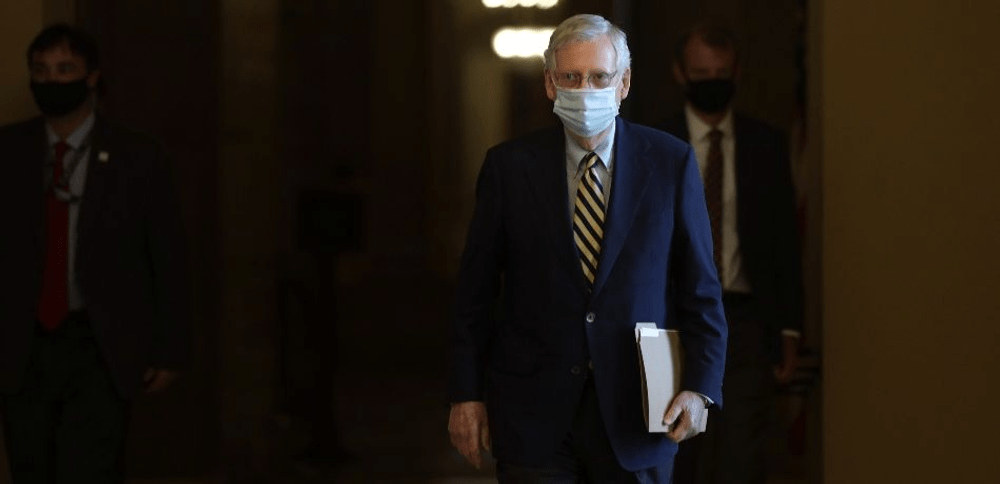COVID Relief Bill Provides $7 Billion for Broadband Access, Pew on Pandemic, Education Broadband Service Decision
Sunday evening, Congress announced reaching a deal on an emergency coronavirus relief package, which includes $7 billion in funding to support broadband internet access. The bill is expected to pass both the U.S. House and Senate on Monday. The $7 billion for broadband set aside in the stimulus agre
Jericho Casper

Sunday evening, Congress announced reaching a deal on an emergency coronavirus relief package, which includes $7 billion in funding to support broadband internet access. The bill is expected to pass both the U.S. House and Senate on Monday.
The $7 billion for broadband set aside in the stimulus agreement will include a reported $3.2 billion for an emergency-broadband benefit that will be available to individuals and families who cannot readily afford essential internet connections, and up to $1.3 billion for broadband connectivity on tribal lands and in communities surrounding historically Black colleges and universities.
The funding also includes $1.9 billion for “rip and replace” efforts to remove Huawei and ZTE equipment from U.S. networks, $300 million for rural broadband deployment, $250 million for the Federal Communications Commission’s telehealth program, and $65 million to improve broadband mapping.
Most significant is the shift in legislators’ attention to the affordability crisis that predated the pandemic, but has become even more dire over the past 10 months. The broadband funding includes an Emergency Broadband Benefit that will provide $50 per month for broadband for low-income families, a provision based on legislation from Sen. Ron Wyden, D-Oregon.
The final legislation does not include other important broadband measures the House first passed in May as part of the HEROES Act. It also leaves out measures discussed in negotiations last week by the bipartisan group of senators who helped restart stimulus negotiations. Yet the broad eligibility criteria for the broadband benefit will provide assistance to many in need of financial assistance to get connected.
In response to the Congressional stimulus package, Chip Pickering, CEO of INCOMPAS, said that broadband funding in the stimulus package is an important band-aid to help keep Americans connected, but stresses “the pandemic makes clear that our networks require surgery.”
“Millions of families lack coverage, while the majority of Americans are forced to live with older networks that are too slow, over-congested and expensive where there is a lack of competition,” said Pickering, noting “other nations have taken massive steps forward to deploy faster speed networks with gigabit goals.”
Pickering called the next Congress and the Biden-Harris Administration to make universal, high-speed, affordability a top priority in the first 100 days, in order to prevent our economy getting ‘stuck in the slow lane’ for decades to come.
Pew Research Center studies reveal Americans’ views of technology during COVID-19
The coronavirus outbreak led to widespread shutdowns and stay-at-home orders throughout the country in March, forcing Americans to adapt and shift parts of their daily routines online.
To paint a full picture of Americans’ attitudes towards the role and effectiveness of various technologies, the Pew Research Center surveyed public opinion on tech over the course of the COVID-19 outbreak in the United States.
A month into the pandemic, 87 percent of U.S. adults said the internet had been at least important for them personally during the outbreak, including 53 percent who deemed the internet as “essential” for them. According to a March survey, roughly half of adults, 49 percent, said that a major interruption in their internet or cellphone service during the coronavirus outbreak would be a very big problem for daily life in their household.
The research reveals that age and level of formal education are the main factors shaping American attitudes toward tech. Adults under the age of 65 were more likely than those 65 and older to say internet outages would be a very significant problem. Individuals with a bachelor’s or advanced degree were also more likely than those with lower levels of educational attainment to say this.
When it comes to data collection and digital privacy, only a minority of Americans said in April that they thought cellphone tracking would be beneficial for curbing the spread of the virus. Some 38 percent said that if the government tracked people’s locations through their cellphone during the coronavirus outbreak it would help at least a little in limiting the spread of the virus. A larger share, 60 percent, said this type of tracking by the government would not make much of a difference in limiting the spread of the coronavirus.
A majority of Americans, 64 percent, said that internet and phones would be useful, but not be an adequate substitute for in-person interactions.
SHLB disappointed in FCC Educational Broadband Service decision
On Thursday, the FCC denied a petition for reconsideration of the Transforming the 2.5 Gigahertz Band Report and Order, filed by the Schools, Health & Libraries Broadband Coalition and several education advocates. Friday, the SHLB Coalition expressed disappointment that the FCC rejected the Coalition’s call to award educational institutions an opportunity to acquire Educational Broadband Service in rural markets.
In the petition, the SHLB Coalition provided many examples of successful wireless deployments by schools working with private sector companies, and provided detailed economic evidence that awarding schools EBS licenses would promote economic growth and help address the homework gap.
“The FCC’s denial of our petition for reconsideration is quite disappointing,” said John Windhausen Jr., executive director of the SHLB Coalition, in a recent statement. “For many schools, access to EBS spectrum would have been their golden ticket to quickly deploy networks that reach their students without home internet access. It is extremely unfortunate that the Commission did not give schools and other educational organizations this opportunity.”










Member discussion